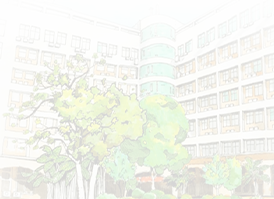CGTN:24 solar. terms in nature: End of Heat
“离离暑云散,袅袅凉风起。”
The summer clouds are dispersed, and the cool breeze rises.
这两句诗出自白居易的《早秋曲江感怀》,
简要描述了处暑时节的天气感受。
当北斗七星的柄指向天空的西南方,
当太阳经度达到150°时,
一年之中的第十四个节气“处暑”准时降临华夏大地。
顾名思义,“暑”字意味着夏季高温,
“处”字暗含着结束之意,
“处暑”节气意味着难以忍受的夏季高温即将结束。
今年的处暑将于本月23号到来。
虽然广州当前天气依然是闷热的天气和猝不及防的瓢泼大雨相结合,
但是依然可以感觉到近日来气温已比七月份时略低了些。
而在我国北方,这15天不仅气温会下降,
而且太阳辐射和降雨量也会减少。
These two lines from Bai Juyi's Reflections on Qujiang River in Early Autumn
briefly describe how the weather feels at the Limit of Heat.
When the handle of the Big Dipper points southwest in the sky and the longitude of the sun reaches 150°,
the fourteenth solar season of the year, the Limit of Heat, arrives in China on time.
As its name implies, the word heat means high summer temperatures,
and the word limit suggests the end of the season, which means that the unbearable summer heat is coming to an end.
This year’s limit of heat will come on the 23rd of this month.
Although the current situation in Guangzhou is still a combination of hot and muggy weather and unexpectedly pouring rain,
but we can still feel the recent temperature has been slightly lower than that in July.
In the north of China, not only will the temperature drop during these 15 days,
but also the amount of solar radiation and rainfall will decrease.
处暑的微节气
与立秋等节气相比,
处暑的三个小节气以更微妙的视角来描绘这一时期的自然变化。
Compared to festivals such as Autumn Commences,
the three subsections in the limit of heat depict the natural changes of this period in a subtler perspective.
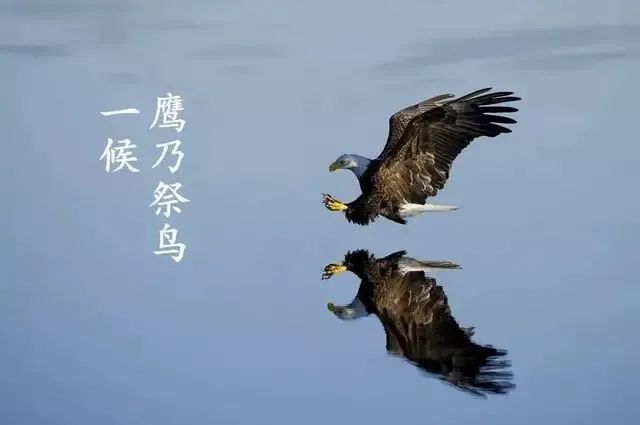
第一个是鹰乃祭鸟,
源于中国古代发现猛禽不捕猎怀孕的猎物,而是将捕食者排在巢前,
以表达对那些为之牺牲的人的敬意的浪漫误会。
因此,人们认为猛禽有正义感,
能感受到秋天的能量,
这预示着许多野生动物生命的终结。
The first is the Ying Nai Ji Niao (Eagles start to hunt birds in big quantity),
derived from the romantic misunderstanding in ancient China when it was discovered that raptors do not hunt pregnant prey,
but instead line up predators in front of their nests as a tribute to those for whom they died.
They did so in order to survive.
Therefore, it was believed that raptors had a sense of justice and could feel the energy of autumn,
which heralded the end of life for many wild animals.
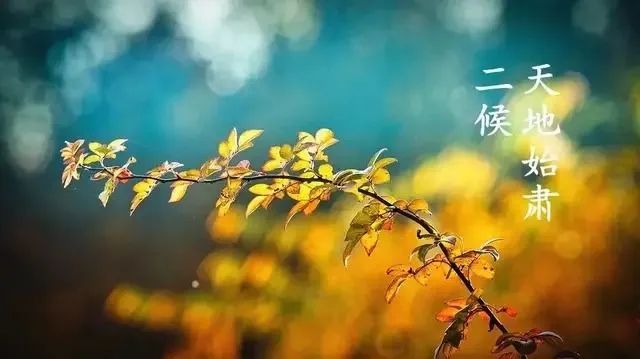
第二个小节气则是天地始肃。
它延续了秋季各种生物生命周期即将结束的主题。
在这个小节气里,整个世界将逐渐安静下来,
不再有新叶或新芽出现。
The second sub-season is Tian Di Shi Su (Plants start to wither).
It continues the theme of the coming end of the life cycle of various creatures in autumn.
During this subsection,
the whole world will gradually quiet down and no new leaves or buds will appear.
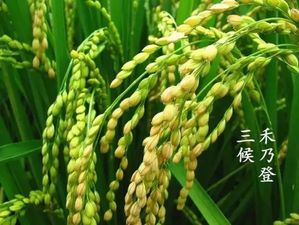
虽然秋天可能是许多生物生命的终结,
但同时也是收获的月份,
越来越多的农作物如水稻、小米和高粱将成熟。
因此,最后一个小节气被命名为禾乃登。
禾是所有庄稼的总称,
而登则是成熟的意思。
While autumn may be the end of life for many organisms,
it is also the month of harvest with the mature of more and more crops such as rice, millet and sorghum.
Therefore, the last subsection is named He Nai Deng (Crops ripening).
He is the general term for all crops, and Deng means ripening.
处暑与故乡
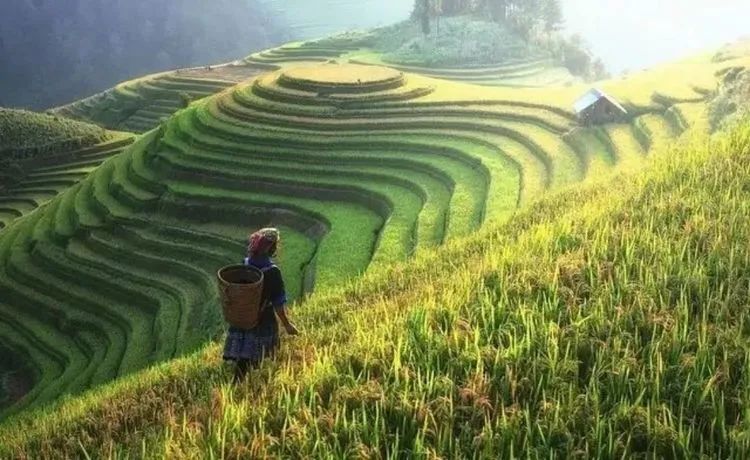
处暑前后,热量进一步向南退去。
在寒流下来之前,
处暑恰好是人们返乡或远行的黄金时间。
这个时间节点通常与七月半、盂兰盆节或中元节的时间重叠,
一般发生在农历的七月十四日和十五日。
返乡的同时,人们通常也会拜祭祖先,
因为七月中旬也正是民间庆贺丰收、酬谢大地的节日。
一般情况下,农作物成熟丰收了,民间传统就是要祭祖。
而在立秋前后,则通常会用新稻米等祭供,向祖先报告秋成。
所以,处暑前后的祭祀习俗就像清明和元宵节的结合,
只是还有一些额外的仪式来祭祀土神。
Around the limit of heat, the heat recedes further south.
Before the cold stream comes down, the limit of heat coincides with a prime time for people to return to their hometowns or travel far away.
This period usually overlaps with the half of July, the Bon Festival or the Chinese Ghost Festival,
which usually occurs on the 14th and 15th of July in the lunar calendar.
While returning to their hometowns, people usually worship ancestors at the same time,
as mid-July is also the time when folks celebrate the harvest and express gratitude to the earth.
Generally, when the crops turn ripe, people will traditionally memorize their ancestors.
Around the Autumn Commences, it is common to make offerings such as new rice to report to the ancestors about the harvest.
Therefore, the rituals around the limit of heat are like a combination of the Qingming and Lantern Festival,
except that there are additional activities to worship the earth gods.
处暑小贴士
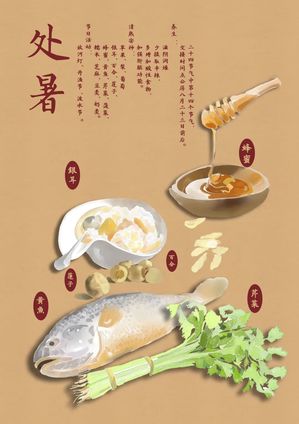
随着秋风渐起,处暑的到来也意味着气温的变化。
处暑前后,白天依旧炎热,但早晚已然开始变冷。
因此,这段时间人的防寒保暖就变得尤其重要,
要尤其注意及时增减衣物。
As the autumn breeze rises, the arrival of the limit of heat also means a change in temperature.
Around the season, the daytimes are still hot, but it gets cold in the mornings and evenings. Therefore, it becomes relatively important to keep people warm during this time,
especially paying special attention to timely add or remove clothing.
此外,休息和饮食也要做出相应改变。
睡眠充足非常重要,
尤其是午后小憩有助消除疲劳、增强身体免疫力。
辛辣或油炸的食物加上即将到来的秋燥不利于人体健康,
因此,处暑前后应该选择维生素和蛋白质含量较高的清淡食物,
加强对胃和脾脏的保护。
In addition, rest and diet should also be changed accordingly.
Getting enough sleep is very significant,
especially a nap in the afternoon to help eliminate fatigue and strengthen the body's immune system.
Spicy or fried food combined with the upcoming autumn dryness is harmful to human health,
so you’d better choose light food with high vitamin and protein content
during the limit of heat to strengthen the protection of the stomach and spleen.
那处暑前后最适合吃什么呢?
鱼虾正是不错的选择,
因为处暑前后正是大量捕捞鱼获开始重新上市的时节。
随着夏季禁渔期的解除,处暑是渔民收获季节的开始。
经过休渔期的繁衍生息,
一批批优质肥美的捕捞渔获重新回到人们的餐桌。
在价格相对便宜的同时,
这些渔获也非常符合处暑前后对维生素和蛋白质含量的要求,
对人体的健康十分有益。
So what is the best food during the limit of heat?
Fish and shrimp is one of the good choices, because this period is the time when a large number of fish catches begin to re-market.
With the lifting of the summer fishing ban, the limit of heat is the beginning of the harvest season for fishermen.
After the fishing moratorium, a batch of high quality and fatty catch returns to people’s table. While relatively inexpensive,
these catches also meet the requirements for vitamin and protein content around the limit of heat,
which is very beneficial to human health.
(策划/国际学院石牌校区学生党支部、文字/杨博文 吴榛溱、编辑/韩雪儿、审核/方葳 尹秋颖、终审/刘明)


